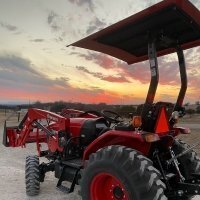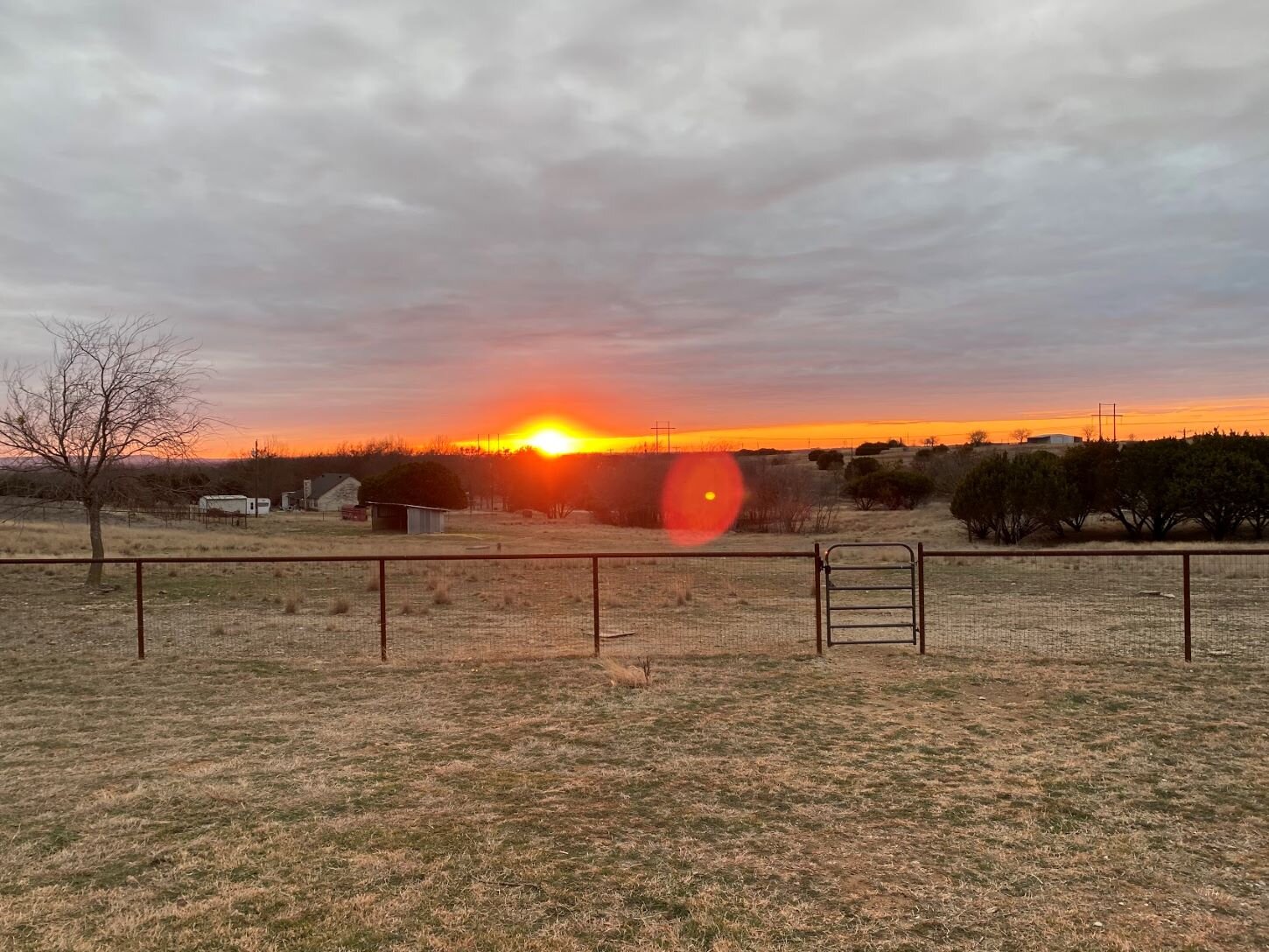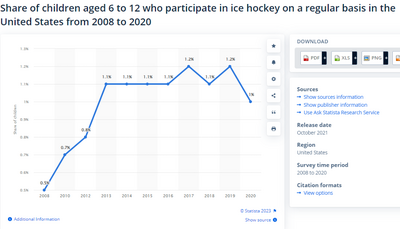-
Posts
1,197 -
Joined
-
Last visited
Content Type
Profiles
Forums
Events
Everything posted by RochesterExpat
-

What are the 2023/24 Sabres' internal expectations
RochesterExpat replied to LGR4GM's topic in The Aud Club
Statistically speaking, accidentally hitting the moon while shooting in any direction upward is astronomically low. -
If you're suggesting that Rousek is a fourth liner in the sense of a physical shut down type of guy, I strongly disagree. He has the skills of a 3rd line scoring forward or whatever term people are taking from EA sports this week to describe players. He doesn't play like a traditional fourth liner--Kozak and Cederqvist do. If Rousek makes the club, it's as a "traditional" third line role of "responsible offense." He's the kind of guy you pair your future Top-6 rookies with as they develop. He's a good puck mover. He's quick. He goes into corners and will take a hit to win a play. He also backchecks. He just isn't the type of player to tie up McDavid along the boards. He played in two games last season and recorded a goal and an assist, but he had zero hits. I get what you're saying about age. Rousek might be 24, but he's only played one full season in Rochester and I think he's got room to still grow. The season prior he joined the roster late in the season due to an ACL/meniscus injury. Granted, he had a really slow start that year (different size rink and not playing hockey for five months will do that), but he looked absolutely fantastic in the 21-22 playoffs (and the 22-23 playoffs for that matter). We'll see. Of course, the whole four lines bit is archaic at this point and not the realities of hockey anymore. Hence why I'm not 100% sure I read what you said correctly.
-
So, it's worth mentioning that he played in the KHL for Dynamo. Dynamo uses a home rink that's North American size. I think he might have an easier time adjusting to NA hockey than many of us expect (myself included until I learned that fact)--at least relative to most EU imports. That being said, there will still be an adjustment as, even if his home rink was NHL size, most of the KHL rinks still aren't. That affects lanes, puck bounces and simple board play. I agree with you that I think the offensive upside is there and I think Buffalo/Rochester's coaching staff will push him to take risks and jump into plays. He has the speed to recover. He was constantly cycling in to help with rushes during the prospect challenge. I think he will continue that trend with the proper encouragement. I think 35 points in 60 games is a reasonable pace, honestly. That's lower than the scoring rate Samuelsson had in the AHL before moving to Buffalo full-time. Since, I like it, I'm going to steal the .58ppg pace but break it down across 72 games with something like: Rochester plays in 29 games before January 1st and 43 after. I think we'll see something like 12 points in the first 29 games, but 30 points across the last 43 (42 in 72). I think the biggest things working against him this season are (from most impactful to least): 1. His ice time will be higher than it was in the KHL (KHL uses 8 dressed D per team, not 6). Running a 72 game AHL season will test his endurance more than anything. 2. The language/cultural barrier. It's an adjustment and a difficult one. Especially coming from Russia. He didn't speak any English in his draft year two years ago, but he was apparently competent enough with his language skills during the 3v3 games to direct teammates on the ice during the 3v3. It might not be an issue. It might be. Hard to say the impact of moving 5,000 miles from home has on a person. At least there are other Russians in Rochester this year. 3. Ice size as mentioned above. 4. The Crowded blue line in Rochester. Right now under contract in Rochester are Prow, Cecconi, Davies, Calgue, Jandric, Johnson, Savoie, Fortunato, Metsa and Novikov. Buffalo currently has 24 of 23 available roster spots taken with a 13-8-3 breakdown. So, unless a goalie is moved, another D-man (Bryson or Stillman) will end up in Rochester (or traded/claimed). I think #4 might arguably be beneficial if Buffalo lets him rest throughout the season like they did with Kisakov, Kozak, and Cederqvist. Kisakov was rested so that he could maximize time in the weight room and Kozak and Cederqvist were afforded generous recovery time from injuries for off-ice rehabilitation. I think #4 is about striking a balance. Too little ice time might keep him from hitting expectations. Too much ice time might do the same (#1).
-
Novikov was a 6th round pick in 2021 so that was before the war in Ukraine started. I swear Kris Baker said Novikov gave teams an impression that he might not sign to play in North America and that's partly why he fell to his position. I can understand from the player perspective about choosing to play in your home country given the success rate of later-round players actually breaking into the NHL. KHL salaries will exceed basic AHL ones. So it's not outlandish to believe he might have said something to this effect. Regardless, this was the COVID draft where there wasn't a lot of data on players and so it's hard to tell what his "real" draft position should have been. Craig Button had him as an early 3rd round pick. On the other hand, NHL Central Scouting had him at 137 of 150 for international skaters. Keep in mind, while he's played 100+ KHL games, he only played in the MHL prior to his draft and his paper stat lines weren't all the impressive. Because the draft age cutoff is September 15th, if he'd been born 2 1/2 months 7 weeks later, his draft season would have been spent in the KHL which would have helped his draft stock immensely. Hell, scouts were surprised to see him practicing with the KHL squad a month after the draft in the KHL version of training camp. The fact no one expected him to even get an invite a month after the draft says a lot about how overlooked he was. A month later he scored his first KHL goal. That turned heads. It's not to say he didn't struggle his first season in the KHL. He was sent down at one point. He was also scratched during the final game of the playoffs. But, again, he was 18 playing in the KHL. That's still impressive. He built off that by getting PK and PP time at 19 at which point he was hard to ignore for anyone who follows prospects or international hockey. Buffalo benefited substantially from being in a position of patience and being able to draft and wait on players, but also just some luck. I assume Buffalo figured they'd be looking at him in 4-5 years. Not two. I want to add that his NHL draft evaluation had him as a below average skater. This perception has carried through and stuck with him. The KHL actually records player speeds (top speed and average) in the box score. More often than not, he had the highest average speed of all D-men. His top speed frequently was the highest on the ice--for all skaters. Yeah, multiple times he's been the fastest skater on the ice in a KHL game. At 19. As a D-man. That's wild.
-
Not sure it counts as a sleeper pick, but Rousek would be my pick to make the roster. Alternatively, I think Novikov gets called up later in the season (February or March timeframe) and hangs around for the playoffs.
-
Lincoln wanted to select the radical abolitionist (and, yes, I mean radical) Cassius Marcellus Clay, but he was told he couldn't select someone who would duel every sitting member of the opposition party if he had the chance (Clay--at this point--has already been in 40 or so duels with pro-slavery folks). Instead, Lincoln selected the rather forgettable Hannibal Hamlin and made Clay the ambassador to Russia. While ambassador to Russia, he convinced the Russian government to tell both Britain and France that if either recognized the Confederacy as an independent country, Russia would declare war on them. That's why, despite France and Britain certainly having a beneficial interest in recognizing and supporting the confederacy, they remained largely sidelined. Russia even sent ships to NY harbor with sealed orders on how to proceed if either Britain or France got involved. Then, in early 1862, Lincoln was desperate for competent military officers, so he recalled Clay to the US and tried to promote him to Major General. Clay, being a true abolitionist, told Lincoln publicly he wouldn't accept the promotion unless Lincoln signed the emancipation proclamation--which Lincoln signed a few months later. Mid-1863 he returned to Russia to father an illegitimate child continue his work as ambassador. He is the reason we have Alaska today. He was the person who negotiated the Alaska purchase. Underrated dude who was almost VP. By keeping Britain and France out of the war, he basically saved the Union which was pretty close to losing prior to July of 1863. Then he got Lincoln to free the slaves. And, because that wasn't enough, he decided to buy Alaska. Also he was completely mental.
-
True. I just view it as an opportunity to set my own expectations for the season for the Rochester players who I won't see again until their season starts. The biggest changes for me as far as expectations are concerned are Kisakov, Kozak and Cederqvist. After last season, I was pretty unimpressed with Kisakov and Kozak and I was worried that Cederqvist might not have the speed to make it to the NHL full-time. Kisakov clearly got stronger this off-season and he's not 21 yet, so he has plenty of time to continue to grow. He has the talent of a second round pick as far as the speed, stick handling, vision and shot are concerned. He just gets moved off the puck entirely too easily. The good news is we saw him last year in the prospect challenge and he was a lot less visible because, even when playing against other prospects, he was getting bumped from the puck too easily. This year he was noticeable when he was on the ice and his play was impactful. Give him another two seasons in Rochester to get stronger and add some more muscle mass and I think he'll be a relevant player at training camp. He clearly understands the work he needs to do. That's half the battle. Kozak was similarly weak--although not nearly on the level as Kisakov--and had some really rough stretches in Rochester, but he impressed me during Rochester's playoff run last season. It's been nice to see him carry that through the off-season. He doesn't have the ceiling that Kisakov has, but depth role players are still valuable pieces. Cederqvist is a pretty intriguing player in the sense that he's clearly the opposite of Kisakov as far as strength goes--at least relative to other prospects--but isn't as fast in the open ice. Either his speed improved over the off-season or he wasn't using it last season in Rochester because of his role. Honestly not sure. Cederqvist isn't as fast as either Benson or Savoie, but he wasn't slowing the line down either when he was on the ice with them and he was completing some pretty solid passes and carried the puck through transition with ease. I think Cederqvist is looking great so far in the prospect challenge and I want to see him play as a power forward in a Top 6 role in Rochester this year. Also Cederqvist's stride confuses me. It's like watching Mark Stone skate.
-

GDT: Buffalo vs. New Jersey Prospects Challenge, 7pm
RochesterExpat replied to Marvin's topic in The Aud Club
His skating is impressive and lives up to the hype, but I don’t see him as NHL-ready and I think that’s my knock on him. The expectation people seem to have is that he’s ready or near-ready for the Big Show and I don’t see it. If he were any other 22 year old I’d say he did great. The issue is with my expectations. Not saying that’s the case for you as well, but I recognize that’s my issue with him. It’s the same reason (although inverted) Fleming was such an impressive goalie. I had zero expectations for him. He exceeded zero by a mile. Metsa as well. Metsa is on an AHL contract so my expectation would be that he’d be pretty far behind Johnson in readiness, but Metsa, as of today, isn’t. -

GDT: Buffalo vs. New Jersey Prospects Challenge, 7pm
RochesterExpat replied to Marvin's topic in The Aud Club
Fleming is dialed in. -

GDT: Buffalo vs. New Jersey Prospects Challenge, 7pm
RochesterExpat replied to Marvin's topic in The Aud Club
Kulich with a nifty backhand -

GDT: Buffalo vs. New Jersey Prospects Challenge, 7pm
RochesterExpat replied to Marvin's topic in The Aud Club
Novikov again plays the poke check perfectly. -

GDT: Buffalo vs. New Jersey Prospects Challenge, 7pm
RochesterExpat replied to Marvin's topic in The Aud Club
Rosen on a 3 on 1 decides to shoot and buries it. -

GDT: Buffalo vs. New Jersey Prospects Challenge, 7pm
RochesterExpat replied to Marvin's topic in The Aud Club
Well Johnson redeemed himself on the next play. He’s got some wheels. -

GDT: Buffalo vs. New Jersey Prospects Challenge, 7pm
RochesterExpat replied to Marvin's topic in The Aud Club
Well NJ scored because no one back checked and Johnson let NJ take three rebounds. -

GDT: Buffalo vs. New Jersey Prospects Challenge, 7pm
RochesterExpat replied to Marvin's topic in The Aud Club
Fleming makes a nice save. -

GDT: Buffalo vs. New Jersey Prospects Challenge, 7pm
RochesterExpat replied to Marvin's topic in The Aud Club
Novikov continues to impress. Noticing how well he gets his stick into lanes. Helps he’s got the reach, but it’s also knowing when and where. -

GDT: Buffalo vs. New Jersey Prospects Challenge, 7pm
RochesterExpat replied to Marvin's topic in The Aud Club
Savoie will be interesting in Rochester to see if he develops further since he’s barely 21. -

GDT: Buffalo vs. New Jersey Prospects Challenge, 7pm
RochesterExpat replied to Marvin's topic in The Aud Club
Turned it on just in time to see Benson score -
This is a good argument. I understand the talent pool point (Mexico would be an interesting expansion opportunity in my eyes), but that assumes we've maximized the talent pool inside the current markets. Specifically to the United States here is the recent participation rate (bear in mind the players reflected in this chart would only now be breaking into the NHL): Here is an article discussing the growth from 2003 to 2013: https://unitedstatesofhockey.com/2013/09/13/hockeys-growth-in-the-united-states-2003-2013/ In 1990-91, USA Hockey’s national membership stood at 195,125 players. In just 10 years, that number ballooned to 439,140 in 2000-01. Just last season, USA Hockey boasted 510,279 members, the second most all-time and just under 1,000 less than the record 511,178 set in 2011-12. This corresponds with the increase in US players in the NHL. Logic suggests the talent exists but it's inefficiently utilized since youth participation is incredibly low. For all we know, the next Connor McDavid is currently sitting in front of a Nintendo Switch instead of skating. And there is a reason for that: the cost of hockey (also the NHL is awful at marketing but that's a different story). The biggest issue with young players playing hockey is simply cost. If we want to increase the talent in the NHL, or have enough talent to expand the league, we need to expand youth participation in hockey. This creates a larger pool from which to draw players to more competitive leagues. I have an eight year old son in his second year of hockey and his 18 game and 42 practice season cost us $1,200 this year (it's $1,400 if you use the payment plan). That's just for House 8U and the price only goes up as he gets older or if he plays travel. It ignores the additional cost of equipment. It ignores the costs for tournaments and the hotel stays during the tournaments. It ignores any additional training camps or skills camps. In order to defray costs, I help coach. That saves us $450 a season (worst hourly wage ever). So, even as the team's head coach, it still costs us at least $750 a season. Keep in mind, I have to pay for a USA Hockey membership to coach ($46) so I'm only saving $394. That also assumes that my time spent before and after practices and games responding to parents or preparing for our next ice time is free. There is a reason the sport is predominately upper-middle class white kids from the suburbs. Who else can afford it? Now, team organizations and the NHL do invest in growing the sport, but we don't necessarily see how well that money translates into growth and I suspect I know why. As far as I know, all the teams have a learn-to-skate/learn-to-play program where it's free to participants and gets kids on the ice for the first time. I think it's four ice sessions here and they provide the equipment which you have an option of purchasing after at a discounted price. From personal experience, a lot of parents put their kids into the program, their kids love it, but once the parents see the cost of signing up their kid for a full season, the hockey dream ends in sticker shock. It goes beyond just the cost of playing hockey. We live 45 miles one way from the nearest ice rink (our home rink). That means that every week I am driving 180 miles to coach practices. Some of our regular season games are 92 miles from my house--once again, that's one way. Even just using our home rink for everything, that's 5,400 miles a season. At 30 miles per gallon, that's 180 gallons of gas and, at $3.29 a gallon, it means I'm spending at least $600 each year additionally just in gas. There is a reason my son is the only student in his entire elementary school that plays hockey. You have to be seriously committed to the sport to play it in Texas. And this isn't an exception to the norm either. Baylor University has a club ice hockey team that practices on a roller rink because their home ice rink--the nearest one--is 88 miles away. Yeah. That's a real thing. The league needs to take action on a few levels. First, when teams expand into new markets, future expansion fees should include fees for building youth hockey rinks in the respective markets. To the credit of the Dallas Stars organization, they've built, bought naming rights, or otherwise subsidized 8 youth hockey rinks in North Texas. Still, that's 8 rinks for 6.5 million people in the DFW metroplex. Houston has five ice rinks--one of which is closing after this season. That's the fourth most populous city in the United States. Next year, that will be four rinks for 2.3 million people. If you want to increase youth participation, you need to buy more rinks. There also needs to be a larger league investment in helping players who are financially disadvantaged. There are certainly youth hockey scholarships available (I wrote a letter of recommendation this summer for one of my players from last season for one), but a lot of parents aren't even aware that's an option. Even then, for parents who are aware, the scholarships are limited. There's no guarantee that you'll get a scholarship the following year. It's a difficult situation. Even putting aside increasing participation in an effort to increase talent, the league and team owners need to look at youth hockey as a long-term investment in the league and their teams. The kids who grow up playing hockey translate into long-term fans of the sport as adults. They're the people buying tickets, watching hockey on TV, and buying team merchandise. They're the same people returning to the ice to coach the next generation. If you want to grow the sport, you need to literally grow the sport.







